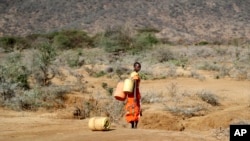A new report by the World Meteorological Organization finds many records linked to climate change were broken last year—none of them good.
“We have broken records in the main greenhouse gas concentrations, carbon dioxide, methane and nitrous oxide, and last year we saw the biggest annual increase of methane concentration,” said Petteri Taalas, WMO Secretary-General, who discussed the agency’s State of the Global Climate 2022 report Friday.
However, he noted, last year failed to reach the all-time high for global warming thanks to the cooling of the Pacific Ocean due to the presence of the La Nina event for the past three years.
“But once we go to the next El Nino, which is likely to happen in the latter part of this year, we may be fairly close to the Paris 1.5 degrees lower limit, at least on a temporary basis,” he said.
The top three warmest years on record were 2016, 2019, and 2020. Meteorologists fear El Nino, which results in unusual warming of surface waters in the eastern equatorial Pacific Ocean could usher in warmer, drier weather.
Information in the WMO report gives rise to many concerns regarding the state of the world’s climate. It reports that droughts, floods, and heatwaves in 2022 affected communities on every continent, costing many lives and livelihoods and billions of dollars in damaged and destroyed infrastructure.
For example, Talaas said, “continuous drought in East Africa, record breaking rainfall in Pakistan and record-breaking heatwaves in China and Europe, affected tens of millions, drove food insecurity, boosted mass migration, and cost billions of dollars in loss and damage.”
The report finds sea level rise has doubled in the past 20 years, mainly due to melting of major glaciers in Greenland and in Antarctica. At the same time, it said that sea ice in Antarctica dropped to the lowest level on record in February last year, while noting a new record low of Arctic Sea ice was set in September.
WMO reports that the melting of glaciers is continuing at a much larger and faster rate than the average of the last decade. It notes the European Alps smashed records for glacier melt due to a combination of little winter snow, an intrusion of Saharan dust and heatwaves.
Switzerland, a country famous for its Alpine skiing, last summer lost 6.2% of the glacier mass, which is the biggest loss so far. “This is not only a matter of temperature,” said Taalas, “but it is also affecting our availability to get the water resources to major rivers and it is affecting also hydropower capacity of the countries.”
The report highlights the serious socio-economic and environmental impacts of climate change and extreme weather. For example, it notes that over 20 million people in East Africa have “faced acute food insecurity” due to the prolonged drought, which has gripped the region for the past five years of below-average rainfall.
By contrast, it reports record breaking rain in July and August “has led to extensive flooding in Pakistan” causing more than 1,700 deaths, affecting 33 million people, and displacing nearly eight million, with “total damage and economic losses assessed at $30 billion.”
The report also puts a spotlight on ecosystems and the environment and shows how climate change is recurring events in nature, such as when trees blossom, or birds migrate.
In a statement issued in advance of Earth Day Saturday on April 22, U.N. Secretary-General Antonio Guterres observed that “We have the tools, the knowledge, and the solutions, but we must pick up the pace.”
He said, “We need accelerated climate action with deeper faster emissions cuts to limit global temperature rise to 1.5 degree Celsius” and to scale up investments in adaptation “for the most vulnerable countries and communities who have done the least to cause the crisis.”
Taalas said WMO has several initiatives underway to help nations adapt to climate change and mitigate its impact. One powerful way to do that, he said, is to invest in early warning systems to “prepare countries to face the growing number of weather-related disasters.”
“Only half of our members have early warning systems in place and that is why they are having more casualties and more economic losses,” he said.
Achieving this ambitious task, he said, “requires improvement of observation networks, investments in early warning, hydrological and climate services capacities.”
He added that WMO aims to reach all 100 countries that currently do not have adequate weather services in place with proper early warning systems by the end of 2027.








